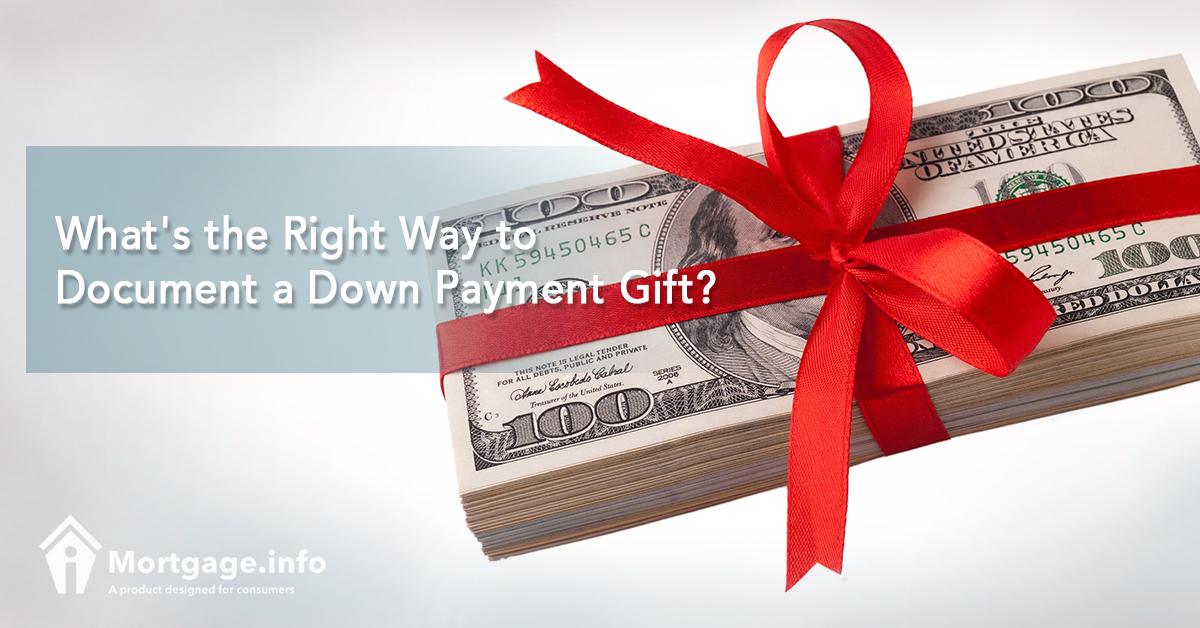
Some loan programs, such as the FHA loan and conventional loan, enable you to receive a down payment gift. This is a gift of money from someone, such as a family member, to put towards the down payment of your new home. In order to qualify to use a gift, you must follow specific instructions so that the lender can verify that the funds used are in fact a gift and not a loan that you must repay.
You Need a Letter
The first step is to document the down payment gift that you receive. The letter needs to follow a specific format in order to count. In that letter, you need to document the exact amount of the money you receive and who it is from. You also need to document how the person is related to you or how they know you. For example, if it is your employer, you should state that or if it is your parents, you should state that as well. You will also need to state the property address the money is meant to help you purchase. Last, but not least, you need to have a statement that tells the lender that the money is a gift and not a loan.
If the money is a loan, you might still be eligible for the mortgage program you applied for, but the lender will have to perform some new calculations. The money you received will now become a debt. The lender will need to know details, such as how much you are expected to pay each month and if there is any interest on the loan. This is why the gift letter needs to specifically state that the money is not expected to be paid back.
Create a Paper Trail
No down payment gift can occur unless you have a paper trail of where the money came from. If your parents wrote you a check from their checking account, the lender will need to see a copy of the check as well as to document where the funds came from. If the money was sitting in your parent’s checking out for many years, the funds are seasoned and the lender does not typically need to go any further in tracking the funds.
If, however, the funds came from a recent sale, such as the sale of a home or the sale of stocks, the lender will need to see the steps as to how the money got into your parents’ account. This can be done with proof of the sale of the asset. You will then need proof that your parents moved the profits from the sale into their checking account. This is done with a deposit statement that equals the same amount of money that they profited from the sale of the asset. Last, but not least, the check gets documented as described above.
As you can see, the lender needs a concrete paper trail to follow where the funds came from. If any large deposits were made within the last year, the lender will need to see their origin in order to determine that there is not some type of loan somewhere down the road that could affect the borrower.
Depositing the Down Payment Gift
The last step is to deposit the down payment gift into your account. You should choose the account that you will use to make any payments at the closing. For example, if you are putting in your own money for the down payment or are paying closing costs with your own money, the gifted money should go into that account so that you can avoid the confusion of using multiple accounts as every account needs to be verified. Before you make the deposit, though, you should take the following precautions:
- Do not deposit the check with any other money; make a separate transaction
- Walk the check into the bank and physically deposit it yourself – do not use an online or ATM transaction
- Get a receipt for the transaction
The deposit receipt will become a part of your loan file as it is the last step for the lender to verify your funds for the down payment.
Receiving a down payment gift may seem tedious, but it is for the good of everyone involved. The lender needs to protect themselves to ensure that you are not putting yourself further into debt than you can handle. They also need to make sure the money you receive is not a loan and you just do not realize it. The paper trail helps to keep things on the “up and up” so you do not find yourself facing foreclosure in the future.
